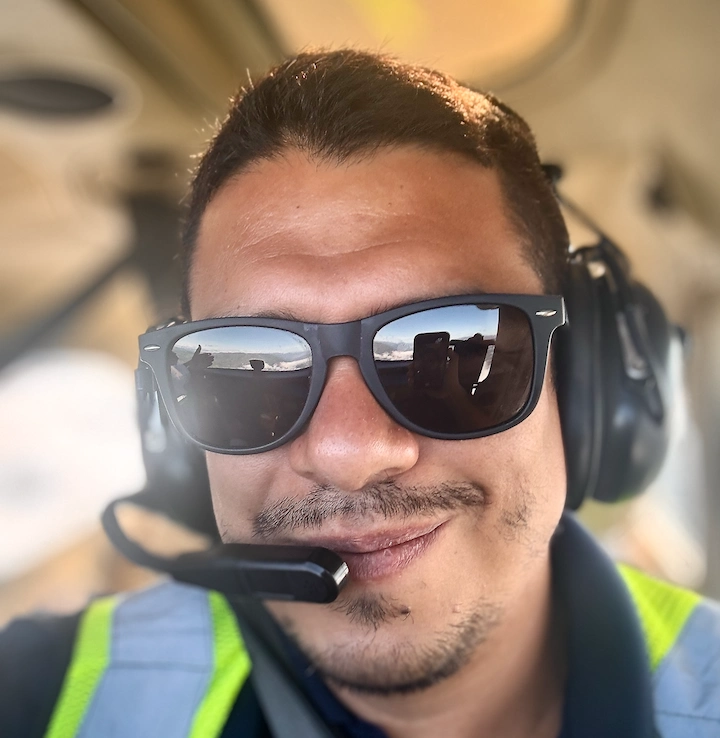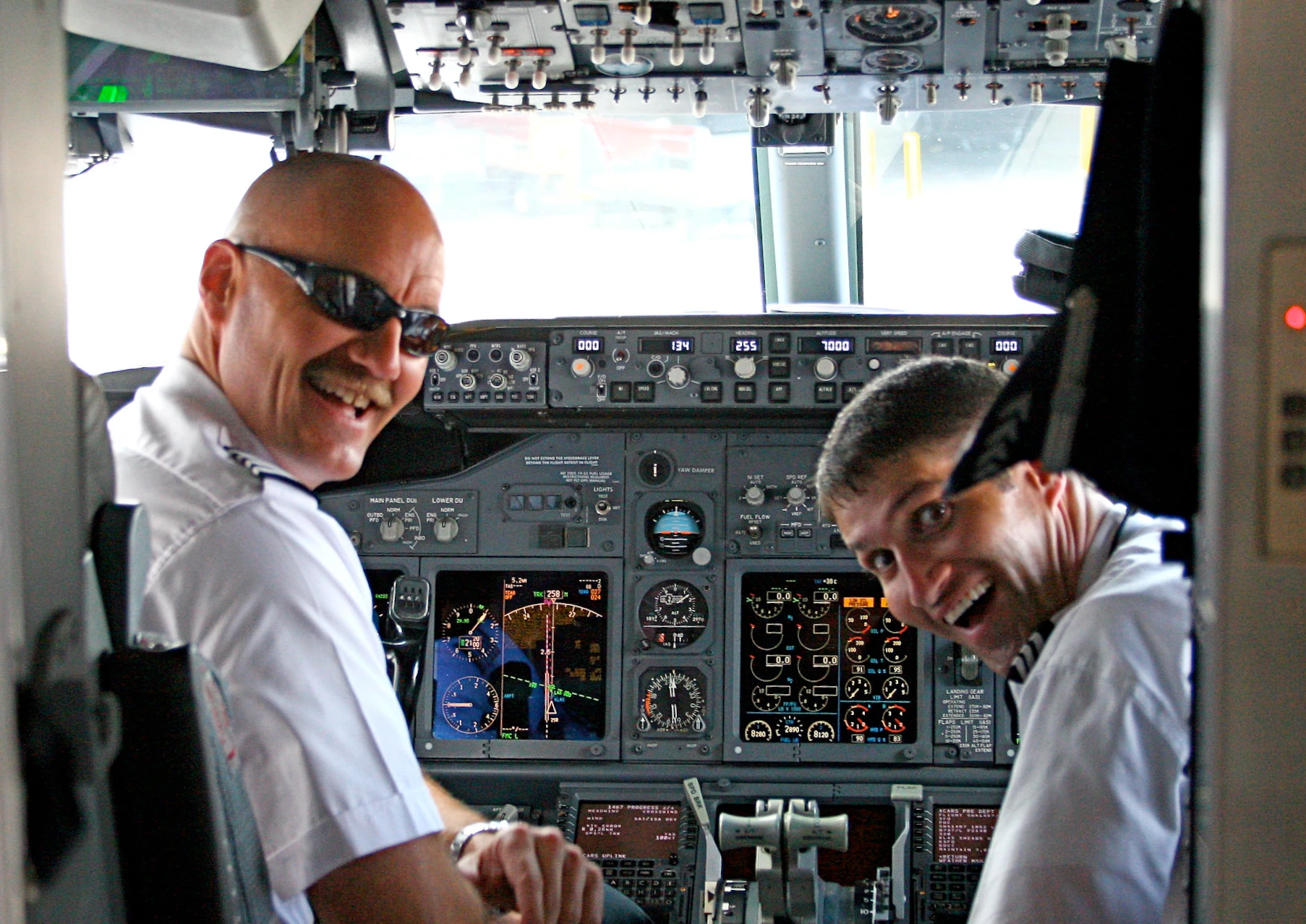
The Sales Process for Flight Schools: Maximizing Lead Conversion and Student Retention
Written by:
Raul Ospina
The sustainability and growth of a flight school depend on a well-defined sales pipeline that effectively converts prospective students into long-term enrollees. Given the competitive nature of aviation education, flight schools must deploy structured marketing and sales methodologies that guide students through the decision-making process. This article explores the three primary phases of this journey—Curiosity, Enlightenment, and Commitment—while providing actionable strategies for optimizing conversions and enhancing student retention.
Phase 1: Curiosity – Generating Interest and Capturing Leads
Before a prospective student commits to flight training, they must first become aware of the school’s offerings. Establishing a strong online presence and leveraging digital marketing techniques are essential for engaging potential students.
Website Optimization for Lead Generation
A flight school’s website serves as its primary digital storefront and must be optimized for engagement and conversions:
- Strategic Call-to-Actions (CTAs): Ensure each webpage contains clear CTAs, such as “Book a Discovery Flight” or “Download Our Aviation Career Guide.”
- Interactive Features: Implement live chat and intuitive contact forms to facilitate immediate engagement.
- Search Engine Optimization (SEO): Improve organic visibility by targeting high-intent keywords such as “aviation school near me,” “pilot training cost,” and “how to become a commercial pilot.” Explore SEO strategies.
- User Experience & Mobile Optimization: Ensure a seamless experience across all devices, especially mobile, since many prospective students browse from smartphones.
- Landing Pages & A/B Testing: Develop targeted landing pages for different audience segments and test variations to maximize conversions.
Leveraging Social Media and Paid Advertising
Flight schools should establish a presence on platforms such as Instagram, Facebook, LinkedIn, and YouTube to:
- Share compelling student success stories and testimonials.
- Deploy geo-targeted advertising campaigns aimed at prospective pilots.
- Host free webinars or offer downloadable resources to collect lead information.
- Engage with audiences through live Q&A sessions, behind-the-scenes content, and interactive polls.
- Utilize paid retargeting strategies to re-engage users who previously visited the website but did not convert.
Email Marketing as a Lead Nurturing Tool
Email remains one of the most effective channels for maintaining engagement with prospective students:
- Implement automated follow-ups to reinforce interest post-inquiry.
- Share informative content such as “The Beginner’s Guide to Flight Training.”
- Introduce exclusive promotions to encourage decision-making.
- Personalize content based on student interests, previous interactions, and training goals.
- Track open rates and optimize email sequences based on engagement data.
Learn more about marketing strategies.
Phase 2: Enlightenment – Building Trust and Providing Value
Once an individual expresses interest, the next objective is to educate them on the value and feasibility of aviation training.
Hosting Discovery Flights and Open House Events
The discovery flight is often a defining moment in a prospective student’s decision-making process. To optimize conversion rates:
- Ensure structured introductory sessions that outline the benefits of flight training.
- Train flight instructors in consultative selling techniques to address student concerns effectively.
- Offer limited-time enrollment incentives to encourage immediate commitment.
- Gather post-flight feedback to refine and improve the experience.
- Follow up with personalized emails, phone calls, or SMS messages to nurture leads further.
Establishing Credibility and Authority
To position the flight school as a leader in aviation education, highlight:
- Student Testimonials & Reviews: Showcase success stories via website and social media.
- Certifications & Industry Partnerships: Promote FAA Part 141 certification and affiliations with airline pathway programs.
- Content Marketing: Regularly publish informative articles on topics such as financing flight training and career progression opportunities.
- Instructor Spotlights & Success Stories: Showcase experienced CFIs and highlight students who have advanced in their aviation careers.
- Professional Webinars & Guest Speakers: Feature industry professionals to add credibility and provide valuable insights to prospective students.
Implementing an Effective Follow-Up Strategy
For students who delay their decision, maintaining engagement is critical:
- Utilize personalized email sequences addressing specific concerns (e.g., financial aid, scheduling conflicts).
- Conduct direct phone outreach to answer questions and offer solutions.
- Retarget website visitors with social media and search ads.
- Offer additional discovery flight opportunities or one-on-one consultations to hesitant leads.
- Use CRM systems to track interactions and tailor communications accordingly.
Adopt a CRM system for streamlined follow-up.
Phase 3: Commitment – Enhancing Enrollment and Retention
Securing student commitment marks only the beginning of the journey. A structured onboarding process and continuous engagement strategies are necessary for long-term retention.
Streamlining the Enrollment Process
Reducing friction in enrollment improves student satisfaction and commitment:
- Offer a seamless online registration experience.
- Provide transparent financial planning resources and payment options.
- Assign dedicated advisors to assist students in navigating their training journey.
- Use digital waivers and online document submission for efficiency.
- Provide a comprehensive welcome kit with training schedules, instructor bios, and FAQs.
Enhancing Student Engagement
Retention hinges on providing a positive training experience. Schools should implement:
- Progress Monitoring Systems: Utilize digital tracking tools to outline student milestones and goals.
- Community-Building Initiatives: Foster student engagement through pilot clubs, mentorship programs, and networking events.
- Instructor-Student Pairing Strategies: Match students with instructors based on learning styles and preferences.
- Interactive Ground School & Training Enhancements: Incorporate modern simulators, virtual reality training, and adaptive e-learning platforms.
- Recognition & Achievement Rewards: Acknowledge students’ progress through awards, certificates, or milestone celebrations.
Expanding Student Lifetime Value
Encourage continued engagement and program completion by:
- Promoting advanced training opportunities (Instrument Rating, Commercial Pilot License, CFI certification).
- Offering referral-based incentives for students who recommend the school.
- Maintaining alumni outreach for ongoing career development opportunities.
- Developing partnerships with airlines and aviation companies for career placement programs.
- Providing continued education and refresher courses for private pilots looking to upgrade their skills.
Discover strategies for scaling your flight school.
Conclusion
A robust sales and retention strategy is essential for sustaining and expanding a flight school’s operations. By enhancing digital outreach, fostering engagement through discovery flights, and refining the student experience, schools can significantly improve lead conversion rates and retention. Implementing data-driven marketing approaches, optimizing training methodologies, and providing career-focused guidance will further strengthen a school’s competitive position in the aviation education market.
Need expert guidance on implementing these strategies? Schedule a consultation with Right Rudder Marketing today.

Content contributed by:
Raul Ospina
Raul is a passionate Ops & Marketing Manager with a knack for problem-solving and a love for technology. He thrives on challenges and enjoys finding innovative solutions to complex problems. With a ba...
View Profile

